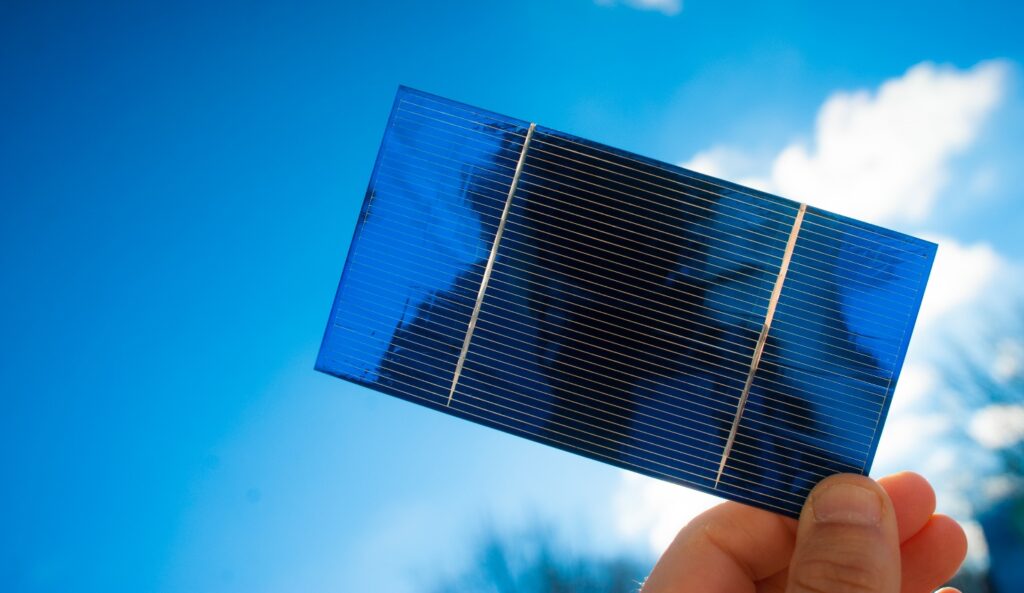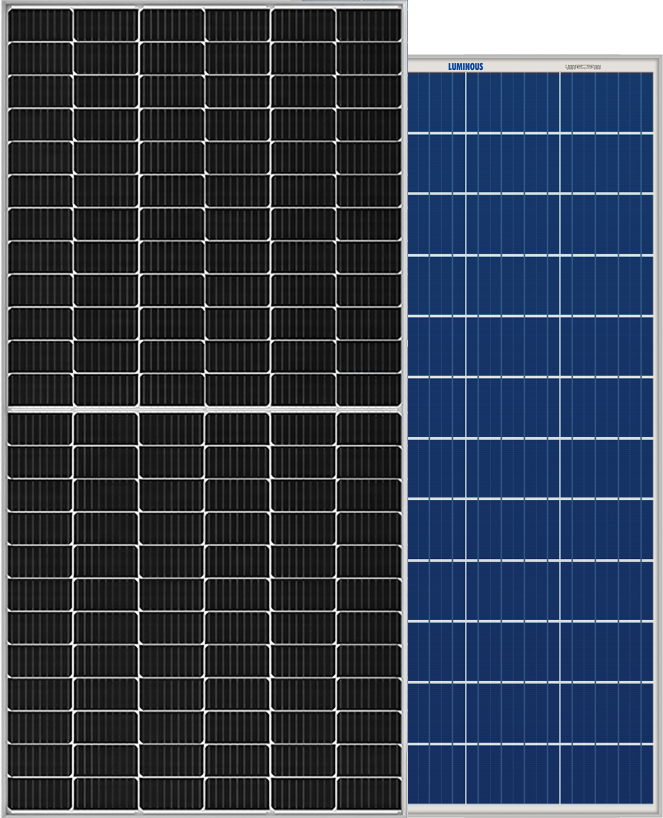PV cells, or solar photovoltaic cells, are at the center of solar technology. They are the foundation upon which solar power systems are built. If you’re thinking about making the switch to solar energy for your home or workplace, here’s everything you need to know about solar photovoltaic energy and how solar photovoltaic cells work.

Types of Solar Panels
There are two kinds of solar panels, broadly speaking, when it comes to solar energy systems: solar panels powered by photovoltaic cells and solar panels that operate with thermal energy.
- Thermal energy solar panels: Thermal energy solar panels are used solely to heat water. They are a great choice if that is your only requirement.
- Photovoltaic cell solar panels: Solar panels powered by photovoltaic cells, on the other hand, are much more widely used. They function by converting energy from sunlight into electricity and can be used to power anything in your home.
What is a Solar Photovoltaic Cell?
Solar photovoltaic technology is used in solar energy systems to convert the energy from sunlight, which is in the form of direct current, into electrical energy that can be used by your devices and appliances in the alternating current form.
Solar photovoltaic cells are, generally speaking, quite small and produce only about one or two watts of power. They are made up of special materials known as semiconductor materials which can collect and store energy efficiently. Although solar photovoltaic cells are themselves quite small — a single cell might have the thickness of only a few strands of hair — they are cased in protective materials such as glass and plastic to withstand outdoor weather conditions.
Many photovoltaic cells come together in chains to form solar photovoltaic panels or solar panels. If you’re planning to buy a solar power system, you can buy a single panel or buy many together to form a set or an array.
Solar photovoltaic cells, because of their structure, are quite flexible and can be constructed and combined in the form of solar panels to meet a wide range of energy needs, from very small to very large.

How Do Solar Photovoltaic Cells Work?
Solar photovoltaic cells function by absorbing sunlight, which contains both light and heat energy. Solar photovoltaic cells take the light energy from the sun and convert it into an electric current or an alternating current. As we have seen, the cells themselves are quite small. However, when many of them are used in solar panels together, they can create enough electricity to power homes and even large industrial enterprises.
Why Should You Use Solar Photovoltaic Energy?
In a world that is increasingly and consistently moving towards cleaner and more sustainable sources of energy, solar photovoltaic energy systems are the natural choice due to the many benefits they come with.
- Renewable energy: Solar photovoltaic cells offer renewable energy because they rely only on energy from the sun to generate electricity. Other fuel sources may run out, but the sun will be around at least as long as humans are — if not more. With incredible technological advances over the past few decades, solar photovoltaic technology has gotten both more efficient and less expensive.
- Clean energy: Solar photovoltaic cells are themselves made up of recyclable materials, both the semiconductor material as well as the plastic and glass that encases it. Along with the source of energy itself, even the materials used to create electricity from solar energy are sustainable!
- Cost-effective: When you switch to solar photovoltaic energy, you’ll find your electricity bill has fallen drastically. Even if you don’t make a full 100% switch to solar photovoltaic energy for your power needs, you’ll save a lot of money in the long run!
- Government subsidies: Many governments all over the world are deeply invested in encouraging the shift toward sustainable and clean energy. Consequently, they offer excellent subsidies and incentives if you’re planning to make the switch to photovoltaic energy.
- Very little maintenance: Solar photovoltaic cells are designed to withstand rough weather conditions. Over time, as long as they are kept clean, solar photovoltaic cells can work efficiently for nearly three decades with only a little bit of sporadic maintenance.
- Excellent efficiency: As long as weather conditions are conducive, solar photovoltaic systems offer a very efficient framework for power generation. Very little energy is ultimately lost or wasted. Even in case of inclement weather, with a solar battery system in place or a connection to the electric grid will make sure your power supply runs completely uninterrupted.
The Final Word: Installing A Photovoltaic System
If you’re convinced and wish to install solar photovoltaic cells in your home or office, look no further! You’ll need to partner with a reliable and experienced company like ours that can assess your particular requirements and circumstances to offer tailored recommendations for your needs. They will also be able to tell you how much installing solar photovoltaic energy systems will cost you, along with any government subsidies you may be eligible for. You will also want to consider warranties and maintenance contracts before you seal the deal on your solar photovoltaic system.
The installation process will also most likely include a full survey of your property to ensure the optimal placement of your photovoltaic cells and an assessment of the projected efficiency of your solar power system as a whole. While the initial costs of setting up a solar photovoltaic system are undoubtedly an investment, it is one that will inevitably pay off in the long run. We at Luminous provide complete solar photovoltaic energy solutions for all your needs.
Leave a Reply